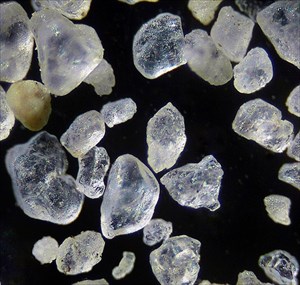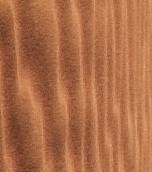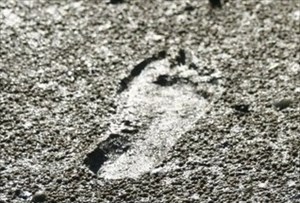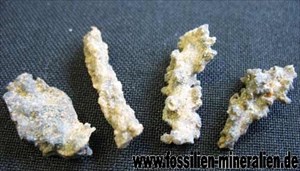Nicht einfach nur Sand EarthCache
-
Difficulty:
-

-
Terrain:
-

Size:  (not chosen)
(not chosen)
Please note Use of geocaching.com services is subject to the terms and conditions
in our disclaimer.
Momentan ist die Infotafel defekt!
Deshalb entfällt Aufgabe 7 bis auf weiteres.
Eure Antworten schickt Ihr direkt an mich.
Danke!
Currently, the information panel is defective!
Therefore task eliminates 7 until further notice.
Your answers will send you directly to me.
Thank you!

*********************************************************************************
Nicht einfach
nur Sand!
*********************************************************************************
Sand und Strand und Strand und Sand und Sanddünen und Steilküsten aus Sand und noch mehr Sand und noch mehr Strand, soweit das Auge reicht.
Aber wo kommt dieser Sand eigentlich her und was ist dieser Sand? Ist es wirklich einfach nur Sand?
Geologische Definition:
Sand ist ein natürlich vorkommendes, unverfestigtes Sedimentgestein, das sich aus einzelnen Sandkörnern mit einer Korngröße von 0,063 bis 2 mm zusammensetzt.  Damit ordnet sich der Sand zwischen dem Feinkies (Korngröße 2 bis 6,3 mm) und dem Schluff (Korngröße 0,002 bis 0,063 mm) ein. Sand zählt zu den nicht bindigen Böden.
Damit ordnet sich der Sand zwischen dem Feinkies (Korngröße 2 bis 6,3 mm) und dem Schluff (Korngröße 0,002 bis 0,063 mm) ein. Sand zählt zu den nicht bindigen Böden.
Sand entsteht durch die physikalische und chemische Verwitterung anderer Gesteine. Ursprüngliches Ausgangsmaterial sind magmatische und metamorphe Gesteine (z. B. Granit), aus denen typischerweise die Kristalle der mineralischen Bestandteile herausgelöst werden.
Durch die Schwerkraft, durch Wind und Wasser werden die Körner transportiert und dabei sowohl durchmischt als auch sortiert.  Da die der Verwitterung und der Abnutzung beim Transport ausgesetzte Oberfläche stark vergrößert ist, können deren Kräfte jetzt besser ansetzen, so dass sich auch die Mineralzusammensetzung des Sandes und die Form der Körner vergleichsweise rasch ändern. So entstehen aus größeren Körnern kleinere, indem sie entlang der Kristallgrenzflächen gespalten oder durch Zusammenstöße der Körner untereinander kleinere Körner herausgebrochen werden. Einige Mineralien (vor allem mafische Minerale) werden unter Witterungseinfluss schnell chemisch umgewandelt und abgebaut, so dass ihr Anteil an der Gesamtmenge des Sandes deutlich abnimmt.
Da die der Verwitterung und der Abnutzung beim Transport ausgesetzte Oberfläche stark vergrößert ist, können deren Kräfte jetzt besser ansetzen, so dass sich auch die Mineralzusammensetzung des Sandes und die Form der Körner vergleichsweise rasch ändern. So entstehen aus größeren Körnern kleinere, indem sie entlang der Kristallgrenzflächen gespalten oder durch Zusammenstöße der Körner untereinander kleinere Körner herausgebrochen werden. Einige Mineralien (vor allem mafische Minerale) werden unter Witterungseinfluss schnell chemisch umgewandelt und abgebaut, so dass ihr Anteil an der Gesamtmenge des Sandes deutlich abnimmt.
Durch mechanische Einflüsse beim Transport ändert sich die Form der Einzelkörner; generell werden Ecken und Kanten umso mehr gerundet und abgeschliffen, je länger der Transportweg ist.  Dies ist allerdings kein linearer Prozess: Je runder und kleiner die Körner werden, umso widerstandsfähiger sind sie gegen weitere Veränderungen. Untersuchungen ergaben, dass häufig ein Transportweg von Tausenden von Kilometern nötig ist, um Sandkörner mittlerer Größe auch nur mäßig zu verrunden.
Dies ist allerdings kein linearer Prozess: Je runder und kleiner die Körner werden, umso widerstandsfähiger sind sie gegen weitere Veränderungen. Untersuchungen ergaben, dass häufig ein Transportweg von Tausenden von Kilometern nötig ist, um Sandkörner mittlerer Größe auch nur mäßig zu verrunden.
Beim Transport entlang von Flussläufen können diese Weglängen nur selten erreicht werden, und auch die stetigen Bewegungen in der Brandungszone eines Strandes reichen in den meisten Fällen nicht aus, um die Rundung von Sandkörnern zu erklären, besonders, wenn der Sand hauptsächlich aus widerstandsfähigem Quarz besteht.  Der weitaus größte Teil des auf der Erde vorkommenden Sandes stammt daher aus Sandsteinen und hat somit schon mehrere Erosionszyklen hinter sich: Sand wird abgelagert (sedimentiert), überdeckt durch andere Sedimente, verfestigt sich, und die Körner werden durch Bindemittel miteinander verkittet (Diagenese). Wenn die Gesteine nach einer tektonischen Hebung wieder der Erosion ausgesetzt sind, werden die Einzelkörner freipräpariert und beim folgenden Transport wieder ein wenig weiter abgerundet, und es schließt sich ein weiterer Zyklus an. Selbst wenn man eine Zyklusdauer von 200 Millionen Jahren annimmt, so kann ein heutiges, gut gerundetes Quarz-Sandkorn durchaus zehn Erosionszyklen und damit fast die halbe Erdgeschichte durchlaufen haben. Im Gegensatz dazu sind Sande als Lockersediment an der Erdoberfläche höchstens eine Million Jahre alt.
Der weitaus größte Teil des auf der Erde vorkommenden Sandes stammt daher aus Sandsteinen und hat somit schon mehrere Erosionszyklen hinter sich: Sand wird abgelagert (sedimentiert), überdeckt durch andere Sedimente, verfestigt sich, und die Körner werden durch Bindemittel miteinander verkittet (Diagenese). Wenn die Gesteine nach einer tektonischen Hebung wieder der Erosion ausgesetzt sind, werden die Einzelkörner freipräpariert und beim folgenden Transport wieder ein wenig weiter abgerundet, und es schließt sich ein weiterer Zyklus an. Selbst wenn man eine Zyklusdauer von 200 Millionen Jahren annimmt, so kann ein heutiges, gut gerundetes Quarz-Sandkorn durchaus zehn Erosionszyklen und damit fast die halbe Erdgeschichte durchlaufen haben. Im Gegensatz dazu sind Sande als Lockersediment an der Erdoberfläche höchstens eine Million Jahre alt.
Als Sonderfall ist Sand zu sehen, der aus den Überresten abgestorbener Lebewesen gebildet wurde, beispielsweise Muscheln oder Korallen. In geologischen Zeiträumen betrachtet, ist dieser Sand sehr kurzlebig, da die Einzelkörner während der Diagenese normalerweise so stark verändert werden, dass sie nach einer erneuten Heraushebung und Erosion nicht mehr in ihrer ursprünglichen Form in Erscheinung treten können.
Eine ganz besondere Sandform ist der "Quietschende Sand". Dies ist ein geologisches Phänomen, das an Sandstränden auftritt.  Sand kann unter gewissen Bedingungen bei jedem Schritt unter den Füßen quietschen. Quietschenden Sand findet man an Stränden auf allen Kontinenten der Welt. Nötig ist ein nichtbindiger Boden. Quietschender Sand tritt nur bei bestimmten Arten von Sand (Silikate, frei von Kalk) und einer bestimmten Korngröße (etwa 150-500 Mikrometer), auf. Der Sand muss in einer geschichteten, so genannten „gestörten Lage“ (hervorgerufen meist durch Wind) liegen. Zudem spielt die Feuchtigkeit eine Rolle. Der Sand muss auch gut verwittert, die Oberflächen der Sandkörner glatt und abgerundet sein. Das Quietschen des Sandes entsteht durch mechanische Beanspruchung: Wenn man über ihn läuft, entstehen Druck und Reibung. Die quietschenden Geräusche werden also von der Reibung der Sandkörner hervorgerufen. Vielleicht gelingt es Dir, den Sand quietschen zu lassen?
Sand kann unter gewissen Bedingungen bei jedem Schritt unter den Füßen quietschen. Quietschenden Sand findet man an Stränden auf allen Kontinenten der Welt. Nötig ist ein nichtbindiger Boden. Quietschender Sand tritt nur bei bestimmten Arten von Sand (Silikate, frei von Kalk) und einer bestimmten Korngröße (etwa 150-500 Mikrometer), auf. Der Sand muss in einer geschichteten, so genannten „gestörten Lage“ (hervorgerufen meist durch Wind) liegen. Zudem spielt die Feuchtigkeit eine Rolle. Der Sand muss auch gut verwittert, die Oberflächen der Sandkörner glatt und abgerundet sein. Das Quietschen des Sandes entsteht durch mechanische Beanspruchung: Wenn man über ihn läuft, entstehen Druck und Reibung. Die quietschenden Geräusche werden also von der Reibung der Sandkörner hervorgerufen. Vielleicht gelingt es Dir, den Sand quietschen zu lassen?
Aber es gibt hier auch noch eine weitere, sehr seltene Form von Sand, die Fulgurite. Die Fulgurite, auch Blitzverglasung, Blitzsinter, Blitzröhren, sind durch Blitzeinschlag im Gestein entstandene Röhren.  Beim Einschlag eines Blitzes, beispielsweise am Strand, entstehenden Temperaturen von bis zu 30.000 °C. Durch diese Temperaturen verglasen die Wandungen durch Aufschmelzung des Gesteins. Die Röhren messen ca. 2 cm im Querschnitt und sind oft mehrere Meter lang. Häufig verzweigen sich die Enden. Nach den vom Blitz getroffenen Gesteinen werden Sand- und Felsfulgurite unterschieden. In Fulguriten wurden relativ seltene Minerale und chemische Verbindungen nachgewiesen, wie z. B. das Mineral Lechatelierit, das ansonsten nur in Tektiten und Impaktgläsern gefunden wurde. War der Sand mit organischen Stoffen vermengt, können auch Fullerene entstehen, die in der Natur sonst sehr selten vorkommen.
Beim Einschlag eines Blitzes, beispielsweise am Strand, entstehenden Temperaturen von bis zu 30.000 °C. Durch diese Temperaturen verglasen die Wandungen durch Aufschmelzung des Gesteins. Die Röhren messen ca. 2 cm im Querschnitt und sind oft mehrere Meter lang. Häufig verzweigen sich die Enden. Nach den vom Blitz getroffenen Gesteinen werden Sand- und Felsfulgurite unterschieden. In Fulguriten wurden relativ seltene Minerale und chemische Verbindungen nachgewiesen, wie z. B. das Mineral Lechatelierit, das ansonsten nur in Tektiten und Impaktgläsern gefunden wurde. War der Sand mit organischen Stoffen vermengt, können auch Fullerene entstehen, die in der Natur sonst sehr selten vorkommen.
Zu den Fragen:
Station 1 "Mittendrin":
Begib Dich zu den Cachekoordinaten.
1. Nimm eine Hand voll Sand (ca. 100 Gramm). Schätze, wieviele einzelne Mineralienkristalle du in der Hand hälst!
2. Hier kannst Du auch beobachten, wie die Höhe von der Wasserkannte, bis hin zu den Dünen langsam ansteigt. Dies geschieht durch das ständige anspülen von neuem Strand und das weitertragen der Körner durch den Wind. Ermittele Anhand Deines GPS die Höhe über N.N. an dieser Stelle.
3. Jetzt wird gebuddelt!
Der Strand wird in zwei Arten von Bodenschichten unterteilt. Der Oberboden, welches der weiche, trockene Sand ist und der Unterboden, welches die feuchte, feste Schicht darunter ist. Die Oberbodenschicht ist nur wenige Zentimert dick.
Buddel doch mal ein wenig im Sand und stelle fest, wie dick diese schicht ist.
Station 2 "Nasse Füße":
Begib Dich zur Wasserkante, aber gib acht, dass Du keine nassen Füße bekommst. ;-).
4. Auf dem Weg dorthin, sammelst Du drei verschiedene Steine. Beschreibe diese nach folgenden Kriterien:
- Größe
- Farbe und Zusammensetzung
- Wenn es Dir möglich ist, finde heraus, um welche Gesteinsart es sich handelt.
5. Nun wollen wir das ganze mal in die einzelenen Bestandteile teilen.
Besorge Dir ein Gefäß, eine Schüssel, ein Glas oder ähnliches. Im Notfall bildest Du mit Deinen Händen eine Schale.
Nun nimm damit ein wenig Sand auf und vermenge ihn mit Wasser. Du wirst feststellen, dass einzelne Bestandteile Aufgrund unterschiedlicher ...... schwimmen, schweben, oder sich absenken.
Aber warum? Ergänze das fehlende Wort und mache ein Foto!
Dieses Foto ist, in Absprache mit dem Reviewer, eine zulässige LOGEBDINGUNG! Logs ohne diese Foto könnten gelöscht werden!
6. Begib Dich nun zur dritten Station, bei N 54° 10.742 E 012° 04.594 und ermittel Anhand Deines GPS die Entfernung von Deinem jetztigen Standort, bis zur dortigen Informationstafel.
Station 3 "Infos über Infos":
Nachdem Du erfolgreich dem Weg gefolgt bist und je nach Witterng vermutlich viele Meter zurück gelegt hast, stehst Du nun auf der sogenannten Promenade, vor einer Informationstafel.
Geologisch gesehen befindest Du Dich hier aber immernoch am Strand. Der minimalkristalisierte Strandsand, zieht sich noch etliche Kilometer bis in das Landesinnere.
Beantworte nun die folgenden Fragen:
7. Wie nennt sich die Zeitepoche, nach deren Ende die Bildung von Strand und Dünen vermutlich begann?
8. Welche Gesteinsart enthält der Dünensand überwiegend?
9. Optional Der Ownerwunsch! Für mich gehört das Foto irgendwie immernoch zu einem Earthcache dazu. Ich würde mir wünschen, dass Du ein Foto mit einstellst. Mach doch einfach eins von den gefundenen Steinen, oder von Dir am Strand, oder, oder, oder. DANKE!
Die Antworten zu den Fragen sendest Du bitte an die folgende Mailadresse:
"Antwort auf Frage 7"@gmx.de!
Als zum Beispiel: Steinzeit@gmx.de oder Urzeit@gmx.de.
Achtung: Keinen Bindestrich einsetzen!
Solltest Du die richtige Adresse gebildet haben, so erhältst Du sofort eine Antwort.
Sollten Fragen nicht richtige beantwortet sein, so setze ich mich mit Dir in Verbindung.
Denke bitte an die Logbedingung aus Aufgabe 5!
Und nun wünsche ich Dir viel Spaß am Strand. Und denke immer daran, es ist nicht einfach nur Sand!
Quellen: www.wikipedia.org

*********************************************************************************
Not just sand
*********************************************************************************
Sand and beach and beach and sand and sand dunes and cliffs of sand and more sand and more beach, as far as the eye can see.
But where does this actually come from and what is sand, this sand? Is it really just sand?
Geologic definition:
Sand is a naturally occurring, unconsolidated sedimentary rock, composed of individual grains of sand with a grain size from 0.063 to 2 mm.  This assigns The sand between the fine gravel (grain size 2 to 6.3 mm) and silt (grain size from 0.002 to 0.063 mm). Sand is one of the non-cohesive soils.
This assigns The sand between the fine gravel (grain size 2 to 6.3 mm) and silt (grain size from 0.002 to 0.063 mm). Sand is one of the non-cohesive soils.
Sand caused by the physical and chemical weathering of other rocks. Original source material are igneous and metamorphic rocks (eg granite), which are typically made of crystals of the mineral constituents extracted.
By gravity, wind and water, the grains are transported while both mixed and sorted.  Since the weathering and abrasion during transport is greatly increased surface area exposed can now begin their forces better, so that the mineral composition of the sand and the shape of the grains change relatively quickly. This results in larger grains smaller by along the crystal boundaries or split by collisions of the grains among smaller grains are broken. Some minerals (mainly mafic minerals) are under influence of weather and quickly converted chemically degraded so that its percentage decreases significantly to the total quantity of sand.
Since the weathering and abrasion during transport is greatly increased surface area exposed can now begin their forces better, so that the mineral composition of the sand and the shape of the grains change relatively quickly. This results in larger grains smaller by along the crystal boundaries or split by collisions of the grains among smaller grains are broken. Some minerals (mainly mafic minerals) are under influence of weather and quickly converted chemically degraded so that its percentage decreases significantly to the total quantity of sand.
By mechanical influences during transport, the shape of individual grains, are generally the more rounded corners and edges and sanded, the longer the transport path.  This is but not a linear process: the smaller the grains are rounded and, the more resistant they are to further changes. Research shows that often a transport route from thousands of miles it takes to sand grains of medium size and moderately to rounding.
This is but not a linear process: the smaller the grains are rounded and, the more resistant they are to further changes. Research shows that often a transport route from thousands of miles it takes to sand grains of medium size and moderately to rounding.
During transport along rivers, these path lengths are rarely achieved, and also the constant movement in the surf zone of a beach rich in most cases not sufficient to explain the rounding of sand grains, especially, is where the sand is mainly made of durable quartz.  The vast Most of occurring on the earth sand is therefore made of sand stones and has thus been several erosion cycles behind: sand is deposited (sedimentation), covered by other sediments, consolidated, and the granules are binder cemented together (diagenesis). If the rocks after a tectonic uplift again exposed to erosion, the individual grains dissected and the following transport back a little more rounded, and it is followed by another cycle. Even assuming a cycle time of 200 million years ago, so today, well rounded quartz sand grains can certainly ten cycles of erosion and run through to almost half the earth's history have. In contrast, sands are old as loose sediment on the surface more than a million years.
The vast Most of occurring on the earth sand is therefore made of sand stones and has thus been several erosion cycles behind: sand is deposited (sedimentation), covered by other sediments, consolidated, and the granules are binder cemented together (diagenesis). If the rocks after a tectonic uplift again exposed to erosion, the individual grains dissected and the following transport back a little more rounded, and it is followed by another cycle. Even assuming a cycle time of 200 million years ago, so today, well rounded quartz sand grains can certainly ten cycles of erosion and run through to almost half the earth's history have. In contrast, sands are old as loose sediment on the surface more than a million years.
As a special case of sand is seen, which was formed from the remains of dead organisms such as shells or coral. Seen in geological time, this sand is very short lived, as the individual grains during diagenesis usually changed so much that they can come to a renewed uplift and erosion is no longer in its original form in appearance.
A very special sand mold is the "Squeaky sand." This is a geological phenomenon that occurs on sandy beaches.  sand can squeal under certain conditions at each step under your feet. Squeaky sand beaches are found on all continents of the world. We need a non-cohesive soil. Squeaky sand occurs only in certain types of sand (silicates, free from lime) and a given grain size (about 150-500 microns), at. The sand must be in a layered, so-called "difficult situation" (caused mostly by wind) are located. Humidity also plays a role. The sand must also be well-weathered, the surfaces of sand grains to be smooth and rounded. The squeak of the sand caused by mechanical stress: If you walk over it, cause pressure and friction. The squealing noise is thus caused by the friction of the sand grains. Maybe it will be you, let the sand squeak?
sand can squeal under certain conditions at each step under your feet. Squeaky sand beaches are found on all continents of the world. We need a non-cohesive soil. Squeaky sand occurs only in certain types of sand (silicates, free from lime) and a given grain size (about 150-500 microns), at. The sand must be in a layered, so-called "difficult situation" (caused mostly by wind) are located. Humidity also plays a role. The sand must also be well-weathered, the surfaces of sand grains to be smooth and rounded. The squeak of the sand caused by mechanical stress: If you walk over it, cause pressure and friction. The squealing noise is thus caused by the friction of the sand grains. Maybe it will be you, let the sand squeak?
But there is also another, very rare form of sand, the fulgurite. The fulgurite, glazing and flash, flash interactivity, flash tubes are caused by lightning strikes in the rock formed tubes.  The impact a flash, for example, on the beach, resulting temperatures of up to 30,000 ° C. With these temperatures, the glaze by melting the rock walls. The tubes measure approximately 2 cm in diameter and are often several meters long. Often the branch ends. After the rocks struck by lightning sand and Felsfulgurite be distinguished. Fulguriten were detected in relatively rare minerals and chemical compounds, such as the mineral Lechatelierit, which was otherwise found only in tektites and Impaktgläsern. The sand was mixed with organic materials, fullerenes can also occur that occur in nature, otherwise very rare.
The impact a flash, for example, on the beach, resulting temperatures of up to 30,000 ° C. With these temperatures, the glaze by melting the rock walls. The tubes measure approximately 2 cm in diameter and are often several meters long. Often the branch ends. After the rocks struck by lightning sand and Felsfulgurite be distinguished. Fulguriten were detected in relatively rare minerals and chemical compounds, such as the mineral Lechatelierit, which was otherwise found only in tektites and Impaktgläsern. The sand was mixed with organic materials, fullerenes can also occur that occur in nature, otherwise very rare.
Among the questions:
Station 1 "middle":
Head up to the cache coordinates.
first Take a handful of sand (approx. 100 grams). Guess how many individual mineral crystals you hold in your hand!
second Here you can observe how the distance between the water Knew, to the dunes rise slowly. This is done by the constant wash up again, the beach and carry on the grains by the wind. Using your GPS Ermittele the height of N.N. at this point.
third now dug
The beach is divided into two types of soil layers. The topsoil, which is the soft, dry sand and the subsoil, which is the moist, firm layer underneath. The topsoil layer is only a few Zentimert thick.
Some digging in the sand a little and realize how thick is this layer.
Station 2 "Wet Feet":
Embark on the water's edge, but be careful that you do not get wet feet. ;-).
fourth Along the way, you collect three stones. Describe to the following criteria:
- Size
- Color and composition
-. If it's possible to find out to what type of rock it is
fifth Now we want to share all the time in the several components.
Get yourself a jar, a bowl, a glass or the like. In an emergency, you form a bowl with your hands.
Now take a little sand on it and blend it with water. You'll find that individual components due to different ...... swim, float, or be lowered.
But why? Fill in the missing word and take a photo!
This photo is in agreement with the reviewer, a permissible condition! Logs without photos could be deleted!
6th Embark now on the third station, at N 54 ° 10 742 04 594 012 ° E and book now ermittel term basis of your GPS, the distance from your location to the local information board.
Station 3 "information about information":
After you successfully followed the path and, depending on weather are probably many feet have traveled, you stand now on the so-called promenade, in front of an information board.
Geologically speaking, you find yourself here, but still on the beach. The beach sand, runs quite a few kilometers into the interior.
Now answer the following questions:
7th What is the name of the erea, begin after the end of the formation of beach and dunes probably
8th What type of rock contains mostly sand dunes?
9th Optional The Owner wishes! For me, the photo is still some way to an Earth cache. I would hope that you have a photo with einstellst. Why do not you found one of the stones, or from you on the beach, or, or, or. THANK YOU!
The answers to the questions, you send us at the following email address:
"Answer to Question 7" @ gmx.de
As for example: Steinzeit@gmx.de or Urzeit@gmx.de
. Caution: Do not use a hyphen
! If you have made the correct address, so you will get an immediate response.
Questions should be answered not right, so I put myself in touch with you.
Please think of the condition from task 5!
And now I wish you much fun on the beach. And remember, it is not just sand!
Sources: www.wikipedia.org

Free counters
Additional Hints
(No hints available.)